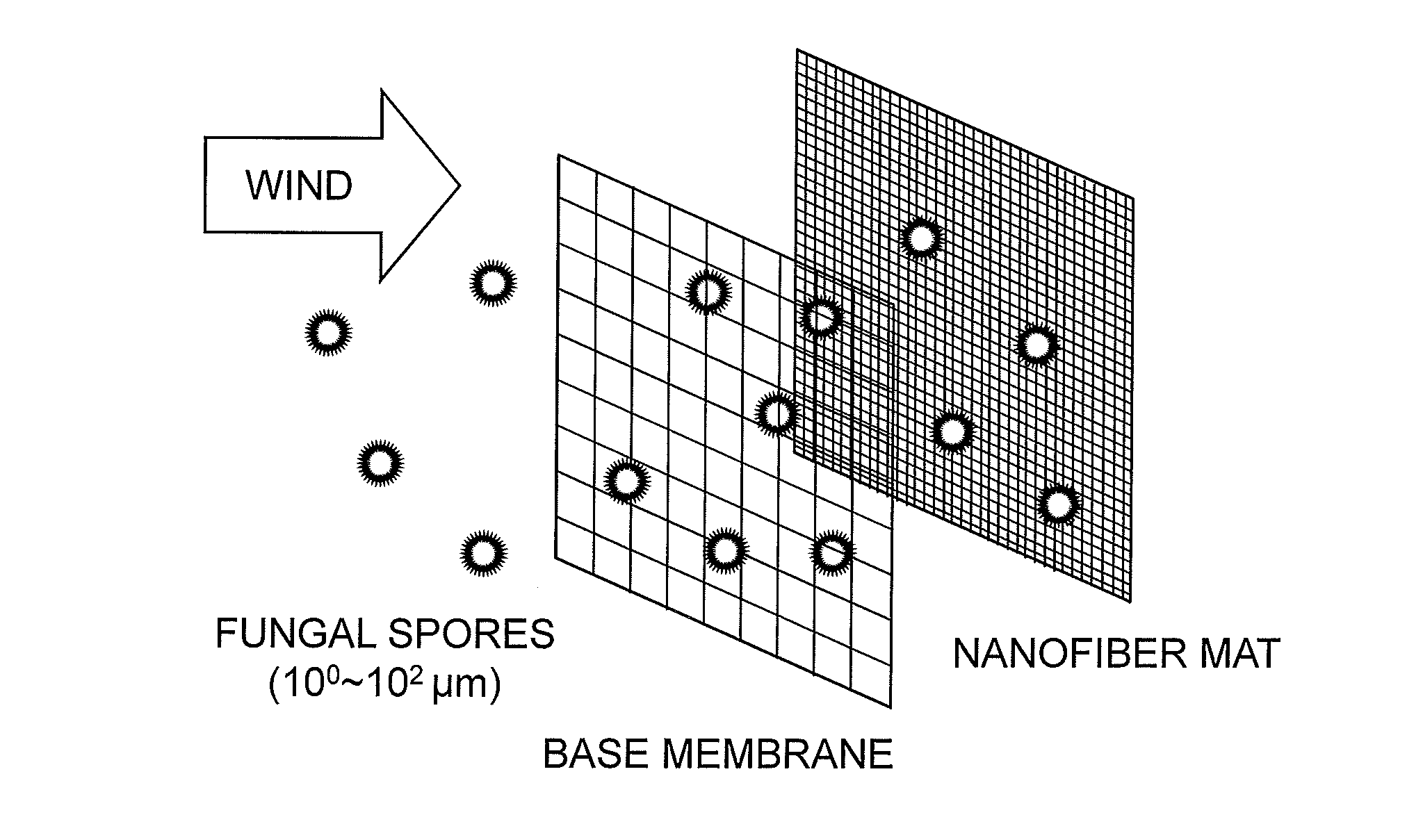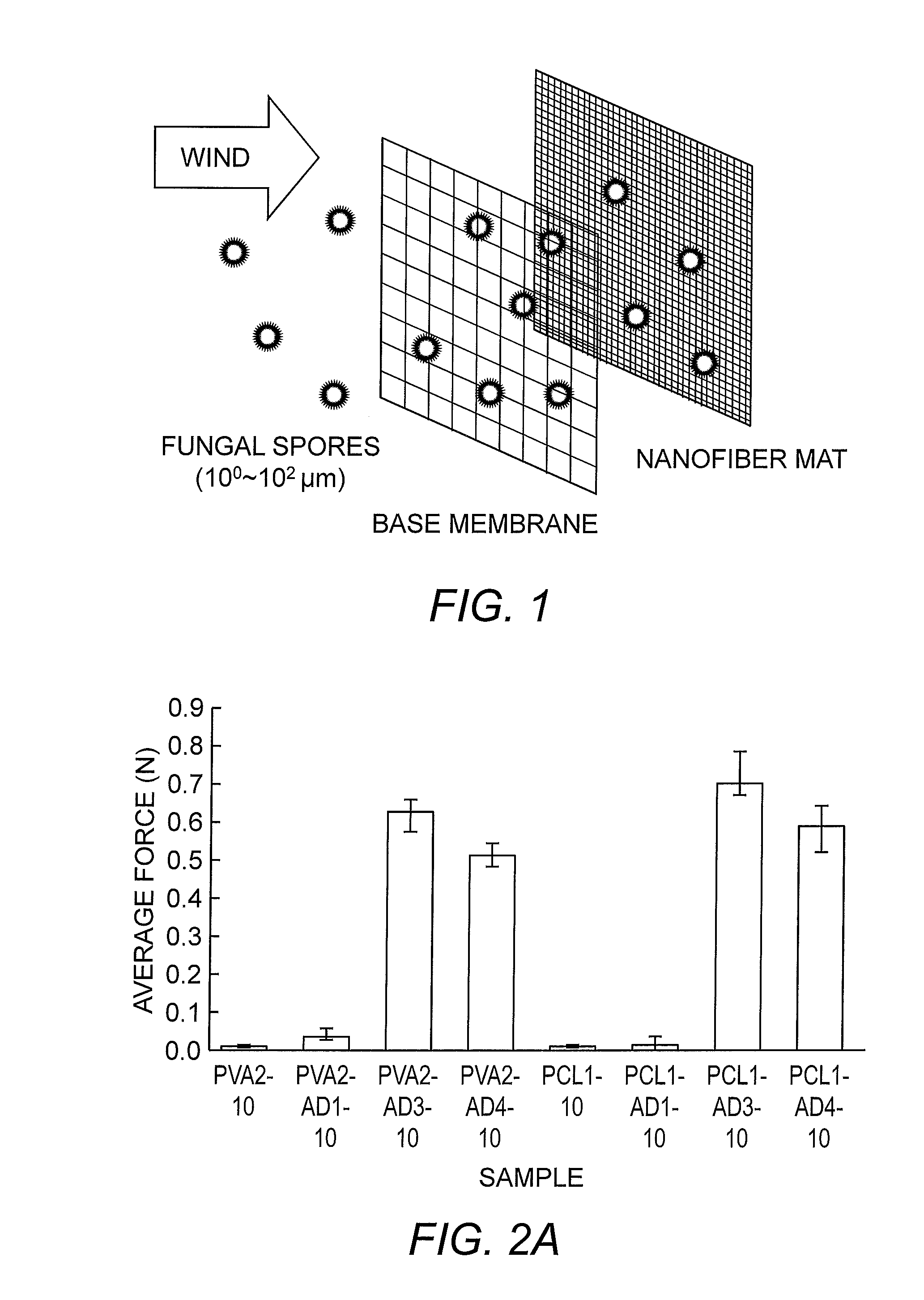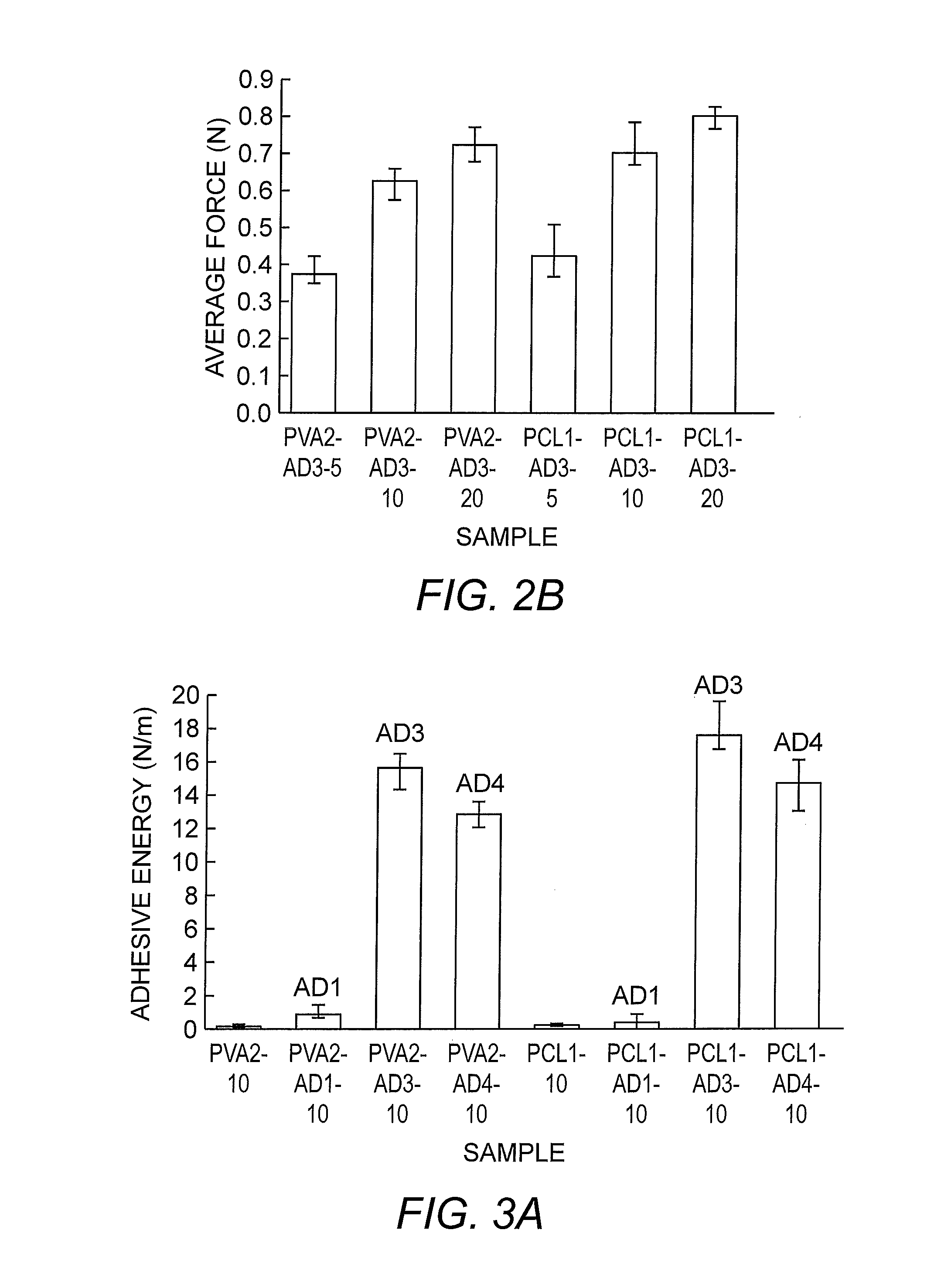Biodegradable plant wound dressing composed of electrospun nanofibers
a technology of nanofibers and plant wounds, applied in the field of biodegradable plant wound dressings composed of electrospun nanofibers, can solve the problems of increasing the number of cases, huge economic losses, and plant and vine microbial attacks, and achieve the effect of preventing microbial infection of plant wounds
- Summary
- Abstract
- Description
- Claims
- Application Information
AI Technical Summary
Benefits of technology
Problems solved by technology
Method used
Image
Examples
example 1
Materials and Methods
[0049]Materials.
[0050]Polyvinyl alcohol (PVA, MW=130 kDa, 99%+hydrolyzed, and MW-9 kDa, 80% hydrolyzed) and polycaprolactone (PCL, Mn=80,000) were obtained from Sigma-Aldrich. Solvents, formic acid, MW=46.03 Da, and acetic acid, MW=60.05 Da, were obtained from Sigma-Aldrich. Two different kinds of soy protein were used, one being water soluble, and the other one being water insoluble. Both the water-soluble soy protein, CLARISOY 100, and the water insoluble soy protein, PRO-FAM 955, were obtained from ADM Specialty Food Ingredients. PVAc (polyvinyl acetate) wood glue, water soluble adhesive SIMALFA 4574, repositionable glue, and pressure-sensitive adhesive MICRONAX 241-01 were obtained from Gamblin Artist's Colors, SIMALFA Water Borne Adhesives, Scaraperfect, and Franklin Adhesives, respectively. All adhesives are nontoxic in nature, with water-based MICRONAX 241-01 being FDA approved (compliant under 21CFR 175.105, 21CFR 176.170 and 21CFR 176.180). Non-ionic tr...
example 2
Monolithic Soy Protein / PVA and Soy Protein / PCL Nanofiber Mats
[0070]Solutions PVA1, PVA2 and PCL1 were electrospun resulting in soy protein / PVA and soy protein / PCL nanofibers (both on rayon substrate). Energy dispersive X-ray (EDX) spectra of these nanofibers were obtained to detect the presence of soy protein in the as-spun monolithic fibers. Soy protein contains sodium (Na), phosphorus (P), and sulfur (S), which are considered unique markers for this protein (Sinha-Ray, et al. (2011) Biomacromolecules 12:2357-63). The percentage content of different elements of the EDX spectra of monolithic soy protein / PVA and soy protein / PCL nanofibers obtained by electrospinning solutions PVA1, PVA2 and PCL1 is shown in Table 4 and the values are in good agreement with the soy content in soy protein / nylon six fibers (Sinha-Ray, et al. (2011) Biomacromolecules 12:2357-63).
TABLE 4Weight %ElementSample PVA1-10Sample PVA2-10Sample PLC-10Carbon82.9573.6285.16Oxygen16.6725.5514.18Sodium0.20.450.17Phosp...
example 3
Electrospinning of Water-Soluble Adhesive / Soy Protein / PVA and Water-Insoluble Adhesive / Soy Protein / PCL Solutions
[0072]Normal specific adhesive energy of mats composed of electrospun soy protein / PVA and soy protein / PCL fibers containing PVAc wood glue, samples PVA2-AD3-10 and PCL1-AD3-10, respectively, was determined. The fiber morphology was not as uniform as it was for pure soy protein / PVA or pure soy protein / PCL fibers electrospun from solutions PVA2 and PCL1. The electrospun fibers containing adhesives appeared beaded at different places along the fiber length due to the presence of the adhesives in the solutions. However, the fiber distribution on the rayon mat was similar to the soy protein / PVA and soy protein / PCL fibers. Samples PVA2-AD1-10, PVA2-AD4-10, PCL1-AD1-10, and PCL4-AD1-10 possessed similar fiber morphology to samples PVA2-AD3-10 and PCL1-AD3-10. Prior electrospraying of adhesives was required for the PCL-based solutions. This is because the soy protein / PCL fibers or...
PUM
| Property | Measurement | Unit |
|---|---|---|
| peel force | aaaaa | aaaaa |
| peel force | aaaaa | aaaaa |
| pressure | aaaaa | aaaaa |
Abstract
Description
Claims
Application Information
 Login to View More
Login to View More - R&D
- Intellectual Property
- Life Sciences
- Materials
- Tech Scout
- Unparalleled Data Quality
- Higher Quality Content
- 60% Fewer Hallucinations
Browse by: Latest US Patents, China's latest patents, Technical Efficacy Thesaurus, Application Domain, Technology Topic, Popular Technical Reports.
© 2025 PatSnap. All rights reserved.Legal|Privacy policy|Modern Slavery Act Transparency Statement|Sitemap|About US| Contact US: help@patsnap.com



